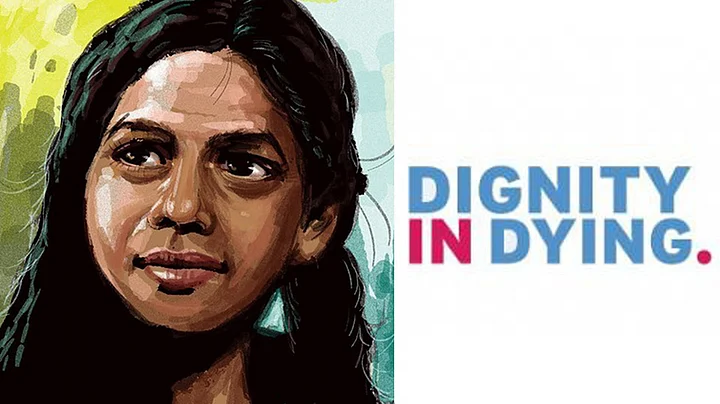The Beginning of the End: 42 Years of Partial Death
On November 27, 1973, Aruna Shanbaug, a junior nurse at the King Edward Memorial Hospital in Mumbai was sodomised and brutally assaulted by a janitor working in the same hospital. The janitor choked Aruna with a dog chain as he carried out the sexual assault. Aruna’s brain was severely injured in the attack, leaving her in a partially-conscious and permanent vegetative state. 42 years later, Aruna died this morning.
Through the years, the amount of pain and suffering she has withstood is mind-numbing. Death was indeed the easier option. She could not communicate with anyone, and most of her family had abandoned her.
Should we have forced Aruna, for decades, to continue with her torturous existence, just because the law did not allow her to die peacefully? In 2010, one of Aruna’s close friends had filed a mercy petition in the Supreme Court, seeking permission to end her excruciating existence. The case brought about India’s landmark judgement in 2011, in which the SC permitted passive euthanasia but rejected the petition for mercy killing.
Passive Euthanasia vs Mercy Killing
Passive euthanasia implies withdrawing or withholding the necessary treatment which would allow a patient to die eventually, whereas euthanasia, or mercy killing, implies deliberately terminating the life of a person through an action on the request of that person.
The term euthanasia has a Greek origin, meaning ‘easy death’. It is also known as assisted suicide as it is carried out with the assistance of another person, usually a physician. The idea is to ensure the painless death of a person who is in excruciating pain, is terminally ill and has no prospect of being cured.
The issue has been surrounded by a fiery debate across the world, with the proponents suggesting that it is humane to let a terminally-ill, incurable person to die painlessly and with dignity if that person wishes to do so.
The counter-argument is that it is the duty and the obligation of a society to save lives of innocent people. It is argued that deliberately encouraging people to die is not morally justified and that assisted suicide is “wrongful death”. Those who oppose euthanasia also fear the possibility of misuse of this right. They further argue that it is an irreversible process. Proponents of euthanasia, however, maintain that it is an option only for the terminally ill, tormented by their suffering.
Euthanasia continues to be a matter of bio-ethical dilemma in India. The Fundamental Rights guaranteed by the Indian Constitution are based on the basic idea of freedom, choice and peace. Then why is a person choosing to die painlessly instead of experiencing unbearable pain not allowed to do so? Is it not compassionate to enable a person to choose a dignified death than eventually die with pain and suffering?
Where do Other Countries Stand on Euthanasia?
Article 21 of the Indian Constitution deals with “protection of life and personal liberty”. This article does not include Right to Die, as the Supreme Court in its landmark judgement in 1996 (Smt. Gyan Kaur vs. The State of Punjab) overruled its earlier judgement of 1994 (P.Rathinam vs. Union of India) and declared that extinction of life is not a part of protection of life. However, we need to pay attention to the fact that right to life revolves around the idea of a life with dignity. How can we justify the lives of those who are not able to live with dignity because of their incurable, degenerative, disabling or debilitating condition?
Some countries in the world have recognized the importance of life with dignity and allowed euthanasia. Euthanasia is legalised in Netherlands, Luxembourg and Belgium. In all the three countries, euthanasia can only be performed by a doctor as a response to a voluntary and well considered request by patients who have an incurable disease and live in unbearable suffering. Euthanasia is also legal in some states of the United States of America.
In India, after the Aruna Shanbaug case, passive euthanasia has been legalised. A competent adult patient has the right to refuse medical treatment by artificial life-sustaining measures, with the consent of the doctor. In a case of an incompetent patient in irreversible coma or a permanent vegetative state, the patient’s relative, friends, doctor or concerned hospital can approach the High Court to seek permission to withhold or withdraw the life sustaining treatment. Active euthanasia is still considered impertinent. In July 2014, the Supreme Court of India called for a widespread debate on the legality of euthanasia in the country. But there has been no development yet.
Shouldn’t ‘Quality’ of Life Gain Precedence?
As science develops, we are able to discover cures to diseases which were thought to be deathly few years ago, but isn’t it all to reduce and minimise human suffering at the end of the day? Rapid developments in science have enabled us to save more lives these days but shouldn’t we also give importance to the quality of life?
Last year, Brittany Maynard exercised her Right to die in the Oregon state of the US which allows for ‘death with dignity’. She had a terminal brain tumour which had started causing daily seizures, disabling her from living the way she chose to. She chose to end her life, and died peacefully with her loved ones beside her. For, living is not the same as living healthy, and with choice and dignity.
(Ritu Bhandari is a contributor for The News Minute. All opinions expressed by the author are her own. A version of this post was first published by India Institute.)
(At The Quint, we question everything. Play an active role in shaping our journalism by becoming a member today.)
